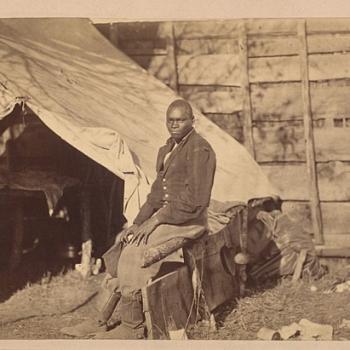We are the hollow men
We are the stuffed men
Headpiece filled with straw. Alas!
Hit a hollow man hard enough and you discover that unlike a piñata, there is nothing inside. This image has never been more needed than online where an entire industry of consultants and experts offering to help me build my personal brand. Somebody must be buying, because I visit more sites, feeds, and Facebook pages where the content consists of branding nothing but the brand with a brand name. As we start a new school (look branding!), we are in the business of classical, Orthodox, Christian education for all levels. That must be real and our mission must drive every decision we make.
Thank God for a Board that cares for content and quality over hollow success. It reminds me that there is no sense in branding nothing, though there is nothing wrong with getting the word out about something. The School should not hide its light under a basket, but the main focus had best be burning with God’s uncreated light (as we can) and not on removing baskets.
If we are going to have a Facebook, Twitter feed, or website, we must support our central goals and add to the Classical, Christian, Orthodox vision. If our goals are virtue, wisdom, and joy done with integrity. . . our branding strategy must do the same. Thank God (and the Board!) we have gotten good advice on just that thing!
God save us from being hollow men with hollow sites promoting our hollow platitudes . . . even about hollowness!

A hollow site contains little new content or too much badly repurposed content that is not clearly marked as repurposed. The worst cases are sheer vanity sites with links to other vanity sites. To paraphrase the brilliant article on the Washington Post that got me thinking about this topic: like my Facebook feed and click through to my blog so that you can go to my Twitter where I will suggest you visit my blog. Amount of content? Not much. Somewhere there is product to be and even that is often “borrowed” from some other content creator.
This isn’t even click bait, though click bait is bad enough. We have all visited the sites that promise 32 pictures from history that will shock us (JFK and Marilyn! Han Solo shot first!) only to be unable to get to the end of the article after being overwhelmed by the ads. (Where is the next button? Here! Oh no! Another ad for life insurance!) This is the site that promotes the business, person, or ministry and does nothing else. It is the blog post that is a long quote from the Washington Post . . . and almost nothing else. I must try to remember: if the Washington Post already said it, then I may not even need to link to it. They have a much bigger footprint than my little self. The exception, which I hope this post fits, is if I have something new to add.
Here is a suggestion: if my business, non-profit, or ministry isn’t producing new content every week to read, watch, or hear . . . we do not need a website promotion budget. We need to hire some content creators.
Repurposed content is not new stuff, but something I did sometime ago that instead of sitting in site archives is trotted forward for today. This can work if the old piece still has resonance. Too often the old piece is getting all the attention it deserves in the archives of my site already. It is not getting hits because it is “meh,” not because it needs to be pushed forward today. Generally, new posts are for new days, lest the new day make the old post seem merely old.
Perhaps worst of all is when our content is just a rehash of what better minds have said. Now it is true that everything I write is probably a mash up of Lewis, Plato, Dante, and Uncle Arthur’s Bedtime Stories. Only a great genius ever says something new, but there is a difference between trying to express your own ideas and simply repacking good ideas with my brand on them.
I should send people to read Abolition of Man or attempt to dialog with the essay. . . not simply regurgitate it intentionally where CS Lewis is simply the ghost idea generator for my post. I will leave the Kalaam to Bill Craig . . . unless I have something new to contribute!
The other problem with repurposed content that I have seen more frequently (and been guilty of doing) comes with a clash in media styles. I have been asked to give speeches in large auditoriums and the style needed for that group is different than the “cooler” style that works on a tiny video screen. Political conventions have lost their way, in part, because speakers have quit speaking to the delegates, relegating their role to not even the task of listeners, but to the television audience. The live listeners are props in a television show. Surely, this should not be the case in a corporate address, every sermon, or a speech to Congress.
Live televised addresses began this process . . . live audience as props, but we have now gone further where the event itself is a by product of the rest of the package. If an audience knows this is the point, it might be ethical, but in ministry it is hard to justify. My Dad took to the pulpit to speak to his congregation that week. Sure you get cassette tapes (!) of each sermon, but the tapes were records of the sermon, the sermon did not serve the tape ministry. If I am not careful, I find myself talking to the Internet feed or the people who will watch later and not to the souls who gathered there today.
Repurposing can be done right: Biola University does a good job with older content by giving it away.* They keep producing new stuff, but give us access to the some of the greatest hits of yesterday. (In fact, the whole Biola website is a good example of doing content right with a good mix of information, new content, and curated content.) At no point, do I get the feeling that the teacher was talking to me online and using the kids as a prop. Perhaps, however, this is mostly because the videos online on any site were captured before we all knew how big streaming and archiving would be. Can we speak unaware of the future viewers when we know we are being captured?
We can, but only if we pause and consider what we are doing. Cameras in the courthouse were mostly good, but too many judges immediately started playing to the (potential) audience. We have gotten used to them over time and judges appear (to me) to be doing a better job. Ubiquity may help us to ignore the camera for the moment and then use the video later appropriately.
For a Christian, called to humility, and for any Christian non-profit like the one where I work, all this talk of “branding” is particularly difficult. It is hard for me to imagine the monks of Mount Athos having a long discussion about their brand and web strategy.
We should pause and ask: are we humble in what we are doing and saying? Since we are human, the answer is surely “no.” How can we be more humble? Do we name drop? Do we focus on Jesus or on our self? Are we building our own republic of self or are we becoming part of His Kingdom? I do not want to contribute to the flashing images on a cave wall that we trick others into thinking are the reality. Instead, I want to walk about Mount Tabor and encourage others to see the same and find the Light of the world who has no shadow. I want to see Jesus only.
For Thine is the Kingdom
Between the conception
And the creation
Between the emotion
And the response
Falls the Shadow.












